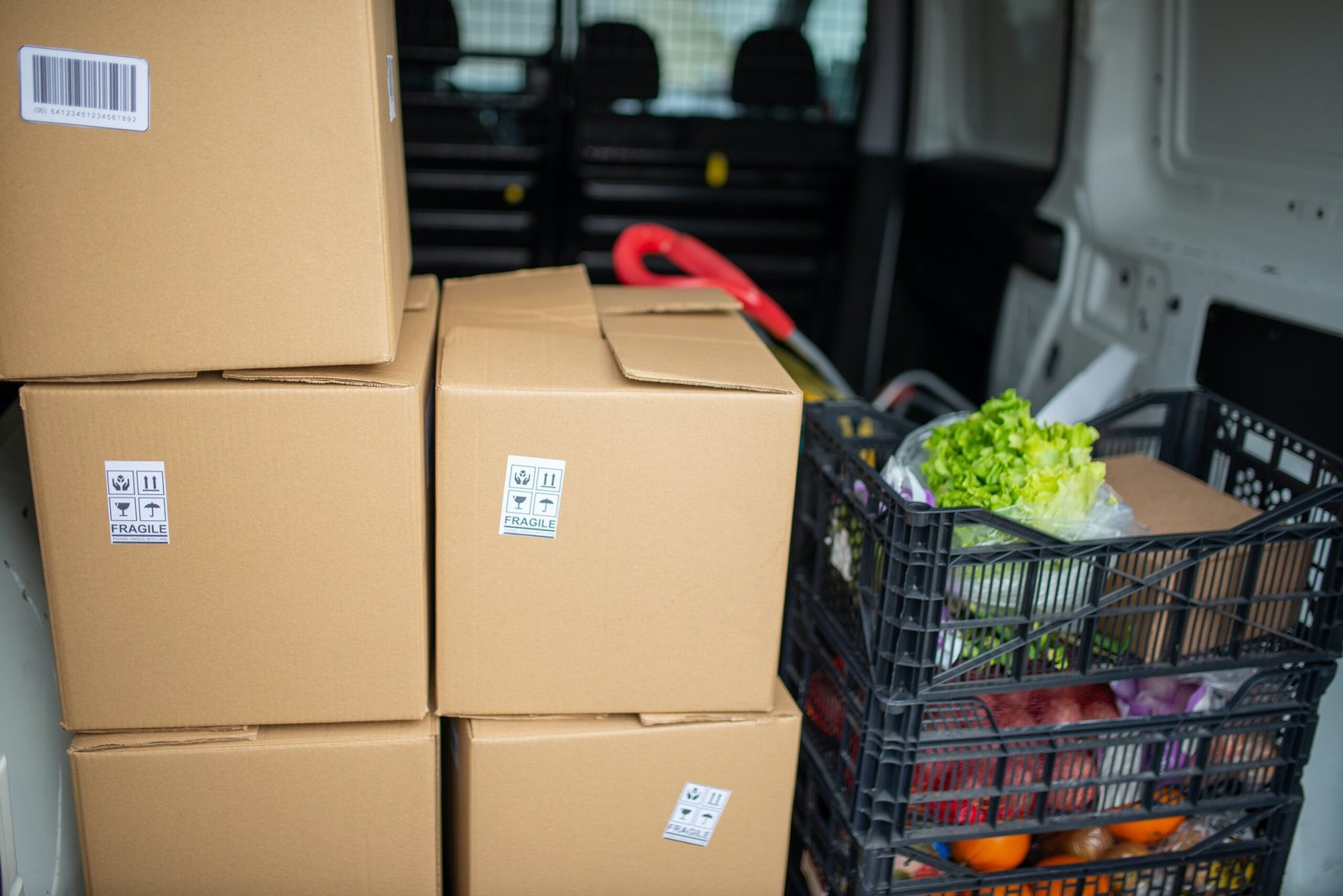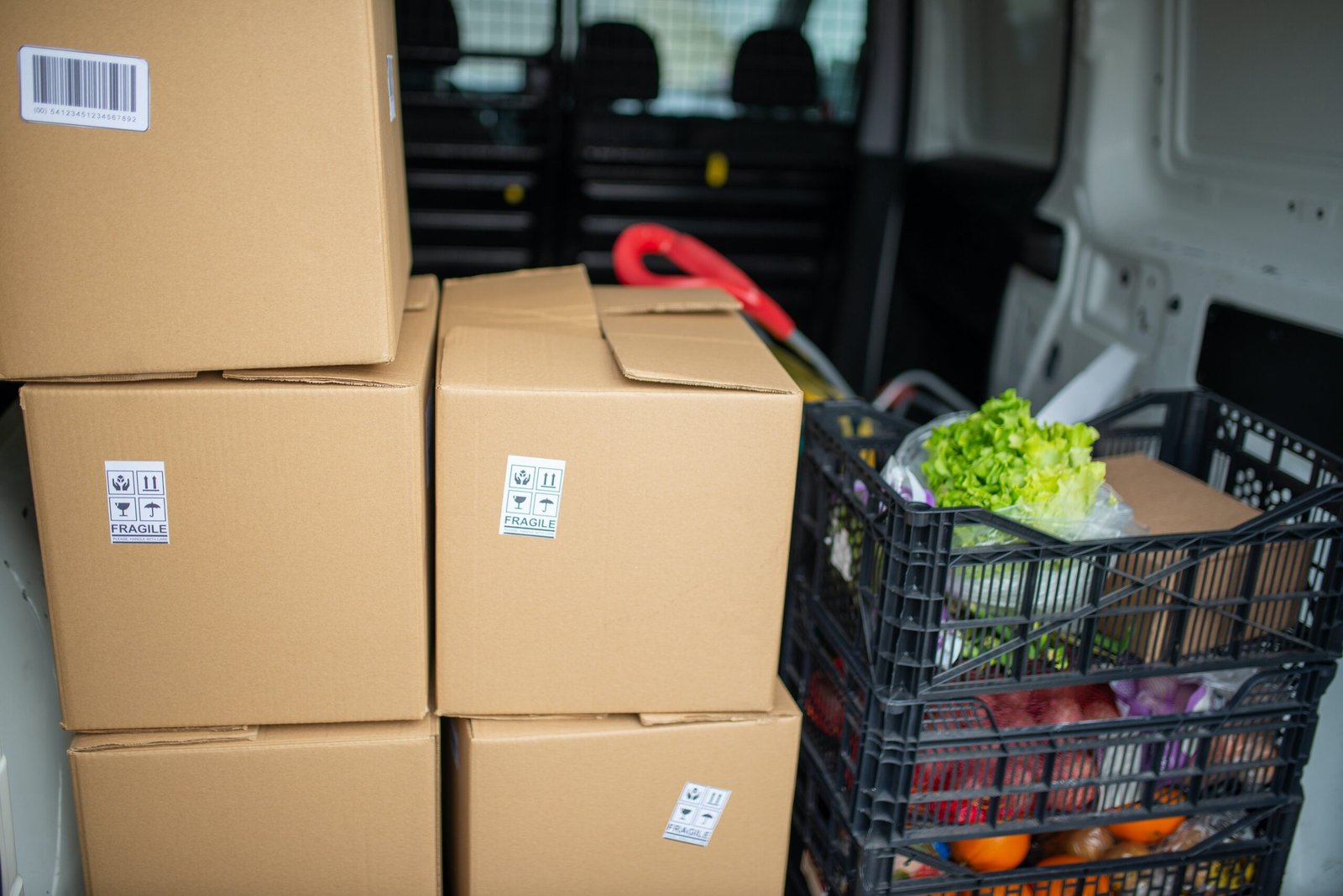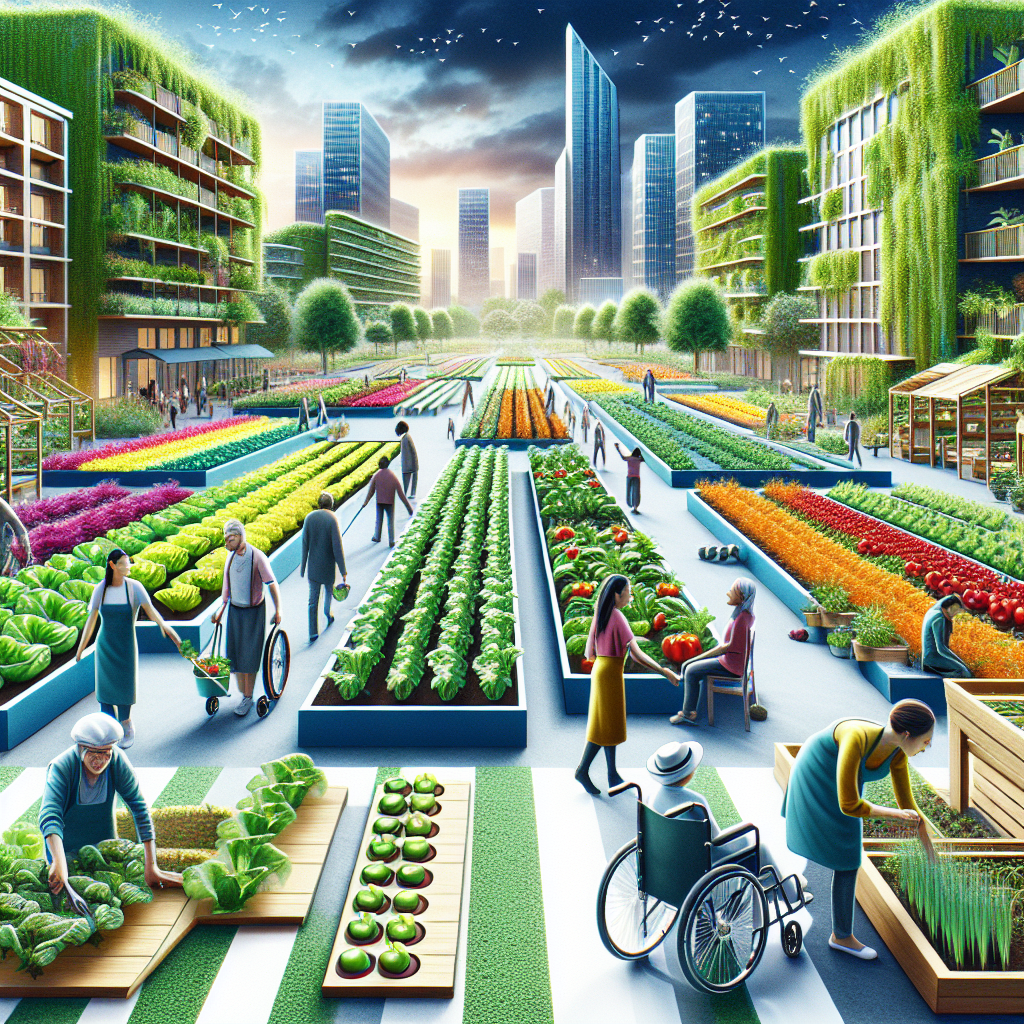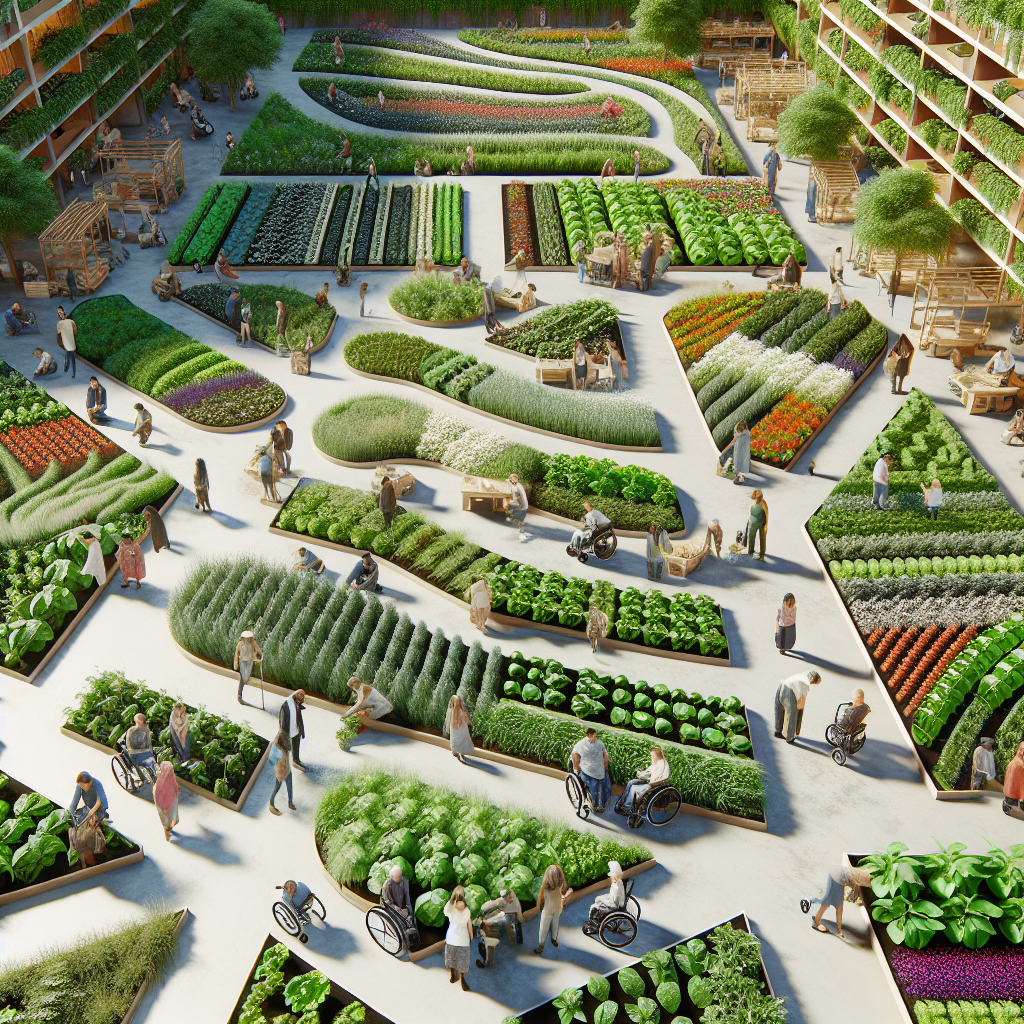
Imagine strolling through a vibrant urban farm, where the scent of fresh herbs and the sight of flourishing vegetables captivate your senses. You feel an indescribable sense of tranquility as you navigate through the well-designed layout, effortlessly accessible to all. In this article, we explore the best practices for urban farm design and layout, highlighting the importance of accessibility and providing valuable insights on how to create an inclusive space for everyone to enjoy the beauty and benefits of urban farming.
Understanding the Importance of Accessibility
Accessible urban farms are essential for creating inclusive communities and providing equal opportunities for individuals with disabilities to engage in agriculture. The benefits of accessible urban farms extend beyond food production and agricultural activities, as they also contribute to the overall well-being, social integration, and empowerment of individuals with disabilities. Research has shown that accessible urban farms can enhance physical and mental health, promote social interactions, improve self-esteem, and provide educational opportunities. Therefore, it is crucial to understand the importance of accessibility in urban farm design and layout to ensure that everyone can participate and benefit from these farms.
Research on the Benefits of Accessible Urban Farms
Numerous studies have highlighted the positive impact of accessible urban farms on individuals with disabilities. These farms serve as therapeutic spaces that allow individuals to connect with nature, engage in physical activity, and improve their mental well-being. Research has shown that participation in urban farming activities can help reduce stress, anxiety, and depression while enhancing overall life satisfaction. Moreover, accessible urban farms provide opportunities for skill development, vocational training, and employment for individuals with disabilities. This research highlights the immense potential of accessible urban farms to positively impact the lives of individuals with disabilities and emphasizes the need to prioritize accessibility in their design and layout.

The Role of Design and Layout in Accessibility
The design and layout of an urban farm play a crucial role in determining its accessibility. By incorporating universal design principles, addressing physical and sensory accessibility, creating circulation paths for mobility, and providing adequate lighting and visual contrast, urban farms can be made inclusive for individuals with disabilities. These design considerations ensure that every aspect of the farm is accessible to individuals with diverse abilities, allowing them to engage in farming activities independently and without barriers.
Considerations for Accessible Urban Farm Design
Incorporating Universal Design Principles
Universal design principles aim to create environments, products, and systems that can be used by every individual, regardless of their physical or cognitive abilities. When designing an urban farm, it is essential to incorporate universal design principles to make it accessible to individuals with disabilities. This includes providing clear signage and wayfinding, designing wide and level pathways, using non-slip surfaces, and incorporating ergonomic tools and equipment.
Addressing Physical Accessibility
Physical accessibility involves removing barriers and providing accommodations for individuals with mobility impairments. It is crucial to ensure that urban farms have wheelchair-accessible pathways, ramps, and entrances. The layout should be designed to minimize steps or steep slopes, and handrails should be installed where necessary. Additionally, raised beds and containers can be positioned at appropriate heights to allow individuals using wheelchairs or with limited mobility to comfortably engage in planting and harvesting activities.
Ensuring Sensory Accessibility
Sensory accessibility refers to creating an environment that accommodates individuals with sensory impairments such as visual or hearing impairments. Designing urban farms with sensory accessibility in mind involves providing visual contrast, installing accessible signage with Braille, and incorporating sensory gardens that engage all senses. These features enable individuals with sensory impairments to navigate the farm independently and experience the joys of urban farming.
Creating Circulation Paths for Mobility
Circulation paths play a vital role in ensuring that individuals with disabilities can move freely and access all areas of the urban farm. It is essential to design wide and level pathways that accommodate wheelchair users and individuals with mobility aids. These paths should be free from obstacles and have adequate turning spaces to allow for easy maneuvering. By creating circulation paths that prioritize mobility, urban farms become more inclusive and welcoming to individuals with disabilities.
Providing Adequate Lighting and Visual Contrast
Good lighting and visual contrast are essential for individuals with visual impairments to navigate and engage in farming activities. Adequate lighting should be provided throughout the farm, including pathways, work areas, and common spaces. Additionally, incorporating visual contrast through color schemes, signage, and furniture can enhance visibility and make it easier for individuals with low vision or color blindness to navigate and participate in activities.

Optimizing Layout for Maximum Accessibility
The layout of an urban farm plays a crucial role in determining its accessibility and usability. By considering zoning and arrangement of farm components, the placement and distribution of raised beds and containers, integration of pathways, walkways, and ramps, appropriate planting techniques, and designing for efficient watering and irrigation, the accessibility and productivity of the farm can be maximized.
Zoning and Arrangement of Farm Components
When designing the layout of an urban farm, it is important to consider zoning and arrangement of farm components. By grouping similar components together, such as planting areas, composting zones, and tool storage, it becomes easier for individuals with disabilities to navigate and engage in specific tasks. Additionally, providing clear signage and wayfinding can improve orientation and facilitate independent navigation within the farm.
Placement and Distribution of Raised Beds and Containers
Raised beds and containers are commonly used in urban farms to facilitate planting and harvesting activities. When determining the placement and distribution of these beds and containers, it is important to consider accessibility for individuals with disabilities. Beds and containers should be positioned at appropriate heights to allow for ease of reach and operation, ensuring that individuals using wheelchairs or with limited mobility can actively participate in planting and harvesting activities.
Integration of Pathways, Walkways, and Ramps
Integrating pathways, walkways, and ramps into the farm layout is essential for ensuring smooth and accessible circulation. Pathways should be wide enough to accommodate wheelchair users, have a level surface to accommodate individuals with mobility aids, and be free from obstacles. Ramps should be installed in areas with changes in elevation to provide universal access. These pathways, walkways, and ramps should be strategically placed to provide connectivity and accessibility to all areas of the urban farm.
Choosing Appropriate Planting Techniques
The choice of planting techniques can greatly impact the accessibility and usability of an urban farm. Vertical or container gardening techniques can be employed to minimize bending or kneeling, making it easier for individuals with mobility impairments to engage in planting and maintenance activities. Additionally, utilizing adaptive tools and equipment, such as long-handled tools and ergonomic gloves, can further enhance accessibility and enable individuals with disabilities to actively participate in farming tasks.
Designing for Efficient Watering and Irrigation
Efficient watering and irrigation systems are essential for the success of an urban farm. When designing the layout, it is important to consider accessible options for watering and irrigation. This may include installing raised irrigation systems or incorporating drip irrigation for ease of use and maintenance. By ensuring efficient watering and irrigation, individuals with disabilities can actively participate in farm maintenance without significant barriers or challenges.
Utilizing Assistive Technology in Urban Farm Design
The integration of assistive technology in urban farm design can further enhance accessibility and provide innovative solutions to overcome existing barriers. Assistive technology refers to devices or systems that assist individuals with disabilities in accomplishing tasks and activities. By understanding the benefits and limitations of assistive technology, incorporating smart features and sensor-based systems, and utilizing braille and tactile signage, urban farms can become more accessible and user-friendly.
Benefits and Limitations of Assistive Technology
Assistive technology offers numerous benefits for individuals with disabilities in urban farming. It can increase independence, improve efficiency, and enhance the overall experience of engaging in farming activities. For individuals with mobility impairments, assistive technology such as gardening gloves with built-in tools or automated watering systems can provide greater access and convenience. However, it is important to recognize the limitations of assistive technology and ensure that it complements and supports the overall accessibility of the urban farm without creating additional barriers or complexities.
Incorporating Smart Features and Sensor-based Systems
Smart features and sensor-based systems can revolutionize the accessibility and efficiency of urban farms. By incorporating technologies such as automated irrigation systems, smart soil monitoring devices, and weather sensors, the management and maintenance of the farm become more efficient and precise. These technologies can also assist individuals with disabilities by providing real-time data, alerts, and reminders, allowing them to actively participate in farm operations and make informed decisions.
Using Braille and Tactile Signage
Braille and tactile signage is essential for individuals with visual impairments to navigate and engage with the urban farm independently. By incorporating braille and tactile signage at key locations, such as entrance gates, pathways, or information boards, individuals with visual impairments can access important information and orient themselves within the farm environment. These features prioritize inclusivity and ensure that no individual is left behind when it comes to accessing and enjoying the benefits of urban farming.

Involving the Community in Farm Design and Layout
Engaging the community, particularly individuals with disabilities, in the design and layout process of an urban farm is crucial for creating a truly inclusive and accessible space. By involving individuals with disabilities in the planning process, promoting inclusive events and activities, and collaborating with local disability organizations, urban farms can be designed based on the unique needs and preferences of the community they serve.
Engaging Individuals with Disabilities in the Planning Process
When designing an accessible urban farm, it is essential to consult and involve individuals with disabilities in the planning process. This can be done through focus groups, surveys, or individual consultations. By gaining insights into the specific challenges and preferences of individuals with disabilities, the farm design and layout can be tailored to meet their needs effectively. Engaging individuals with disabilities ensures that their voices are heard and their perspectives are considered, resulting in a more inclusive and accessible urban farm.
Promoting Inclusive Events and Activities
Inclusivity should not be limited to the physical design of the urban farm but should extend to the events and activities organized within the space. By promoting inclusive events and activities, such as accessible workshops, gardening classes, or community gatherings, individuals with disabilities can actively participate and contribute to the farm’s vibrant community. These events provide opportunities for skill development, social interaction, and empowerment, further enhancing the accessibility and impact of the urban farm.
Collaborating with Local Disability Organizations
Collaborating with local disability organizations is instrumental in ensuring the accessibility and success of an urban farm. These organizations have a wealth of knowledge and experience in serving individuals with disabilities and can provide valuable insights and recommendations for designing an inclusive farm. By forging partnerships and leveraging the expertise of disability organizations, urban farms can create meaningful and lasting impact within the community.
Training and Education for Accessible Urban Farm Design
Training and education play a crucial role in promoting accessible urban farm design. By providing resources and training materials, offering workshops and certifications, and highlighting case studies and success stories, individuals and organizations involved in urban farm design can stay informed, gain necessary skills, and foster continuous improvement.
Providing Resources and Training Materials
To promote accessible urban farm design, it is important to provide resources and training materials that address the principles and best practices of accessibility. This may include guides, manuals, or online resources that cover topics such as universal design, physical accessibility, sensory accessibility, and assistive technology. By making these resources readily available, individuals and organizations involved in urban farm design can enhance their knowledge and capabilities in creating inclusive spaces.
Offering Workshops and Certifications
Workshops and certifications are effective ways to educate and train individuals involved in urban farm design and layout. By organizing workshops that focus on accessibility and inclusive design principles, participants can gain hands-on experience and learn practical techniques to incorporate accessibility into their work. Offering certifications in accessible urban farm design can further validate and recognize the expertise of individuals, ensuring that accessibility remains a priority in future projects.
Highlighting Case Studies and Success Stories
Highlighting case studies and success stories of accessible urban farms can inspire and motivate individuals and organizations involved in similar projects. Sharing these stories through publications, online platforms, or conferences showcases the positive impact of accessible design and encourages others to adopt similar practices. By shining a spotlight on successful examples, the community of accessible urban farmers can grow and learn from each other’s experiences.

Challenges and Solutions in Accessible Urban Farm Design
Designing and implementing accessible urban farms can present various challenges. However, with the right approach and innovative solutions, these challenges can be overcome to create inclusive and thriving farm environments.
Overcoming Space Constraints and Limitations
Space constraints and limitations are common challenges faced when designing urban farms. However, innovative design solutions can help maximize available space to create accessible and productive farm environments. Vertical gardening techniques, optimized layout designs, and efficient utilization of raised beds and containers can enable urban farms to thrive in limited spaces while ensuring accessibility for individuals with disabilities.
Balancing Aesthetics and Accessibility
Achieving a balance between aesthetics and accessibility is crucial in urban farm design. While aesthetics can enhance the overall ambiance and appeal of the farm, it should not compromise the accessibility and usability for individuals with disabilities. By considering universal design principles from the early stages of planning, integrating accessibility features seamlessly into the overall design becomes achievable. Collaboration with landscape architects and designers can ensure that aesthetics and accessibility go hand in hand in creating a visually appealing and accessible urban farm.
Navigating Legal and Regulatory Requirements
Navigating legal and regulatory requirements can be daunting when designing an accessible urban farm. However, understanding and complying with relevant accessibility regulations, building codes, and zoning requirements is essential to ensure the farm is compliant and accessible for individuals with disabilities. Consulting with legal professionals and engaging with local government authorities can provide guidance and support in navigating these regulations effectively.
Promoting Awareness of Accessible Urban Farming
Promoting awareness of accessible urban farming is crucial to generate support, collaboration, and engagement from the wider community. By advocating and conducting outreach efforts, collaborating with local government and urban planning bodies, and sharing success stories and benefits, accessibility in urban farming can become a widely recognized and prioritized aspect of sustainable agriculture.
Advocacy and Outreach Efforts
Advocacy and outreach efforts are instrumental in raising awareness about accessible urban farming and its benefits. Engaging with the media, organizing awareness campaigns, and participating in relevant events or conferences can help promote the message of accessibility and inclusivity in urban farming. By advocating for accessible urban farms, individuals and organizations can influence public opinion and garner support for creating inclusive spaces within their communities.
Collaborating with Local Government and Urban Planning Bodies
Collaborating with local government and urban planning bodies is crucial to ensure that accessibility is incorporated into urban farm design guidelines and policies. By actively engaging with these stakeholders, urban farmers can advocate for the importance of accessibility and influence the development of regulations and frameworks that prioritize inclusivity. Collaborative efforts can result in more favorable conditions and support for the establishment of accessible urban farms.
Sharing Success Stories and Benefits
Sharing success stories and highlighting the benefits of accessible urban farming can inspire individuals and communities to embrace inclusivity in agriculture. By showcasing the positive impact of accessible urban farms on individuals with disabilities, their physical and mental well-being, and the overall community, people can better understand the value and importance of creating inclusive spaces. Sharing these stories through social media, websites, or local publications can generate widespread support and encourage others to replicate these successes.

Importance of Maintenance and Regular Evaluation
Ensuring the long-term accessibility and usability of an urban farm requires continuous maintenance and regular evaluation. By implementing regular inspections and assessments, addressing maintenance and upkeep challenges, and seeking continuous feedback and input from users, urban farms can remain inclusive and responsive to the needs of individuals with disabilities.
Implementing Regular Inspections and Assessments
Regular inspections and assessments are essential to identify any accessibility barriers or maintenance issues within an urban farm. By conducting regular reviews of pathways, signage, ramps, and other farm components, potential problems can be identified and addressed promptly. Regular inspections also provide an opportunity to evaluate the effectiveness of accessibility features and make any necessary adjustments or improvements.
Addressing Maintenance and Upkeep Challenges
Maintenance and upkeep can present challenges in ensuring the continued accessibility of an urban farm. It is important to establish maintenance protocols that prioritize accessibility and ensure that ramps, pathways, raised beds, and other components are kept in good condition. Regular repairs, cleaning, and replacements should be scheduled to maintain accessibility features and prevent any deterioration that may hinder the participation of individuals with disabilities.
Seeking Continuous Feedback and Input from Users
Seeking continuous feedback and input from users, particularly individuals with disabilities, is vital for maintaining and improving the accessibility of an urban farm. By actively listening to their experiences and suggestions, urban farms can identify areas that require improvement or modification. This feedback can guide future design decisions and facilitate ongoing improvements that address the evolving needs and preferences of the user community.
Conclusion
Creating accessible urban farms is essential for fostering inclusive communities and providing equal opportunities for individuals with disabilities to engage in agriculture. By understanding the importance of accessibility, incorporating universal design principles, addressing physical and sensory accessibility, optimizing layout, utilizing assistive technology, involving the community, providing training and education, overcoming challenges, promoting awareness, and prioritizing maintenance and evaluation, urban farms can be designed and operated to be inclusive and welcoming to individuals with disabilities. As we strive for a more inclusive and sustainable future, accessible urban farm design and layout is a crucial aspect that should be embraced and prioritized.





